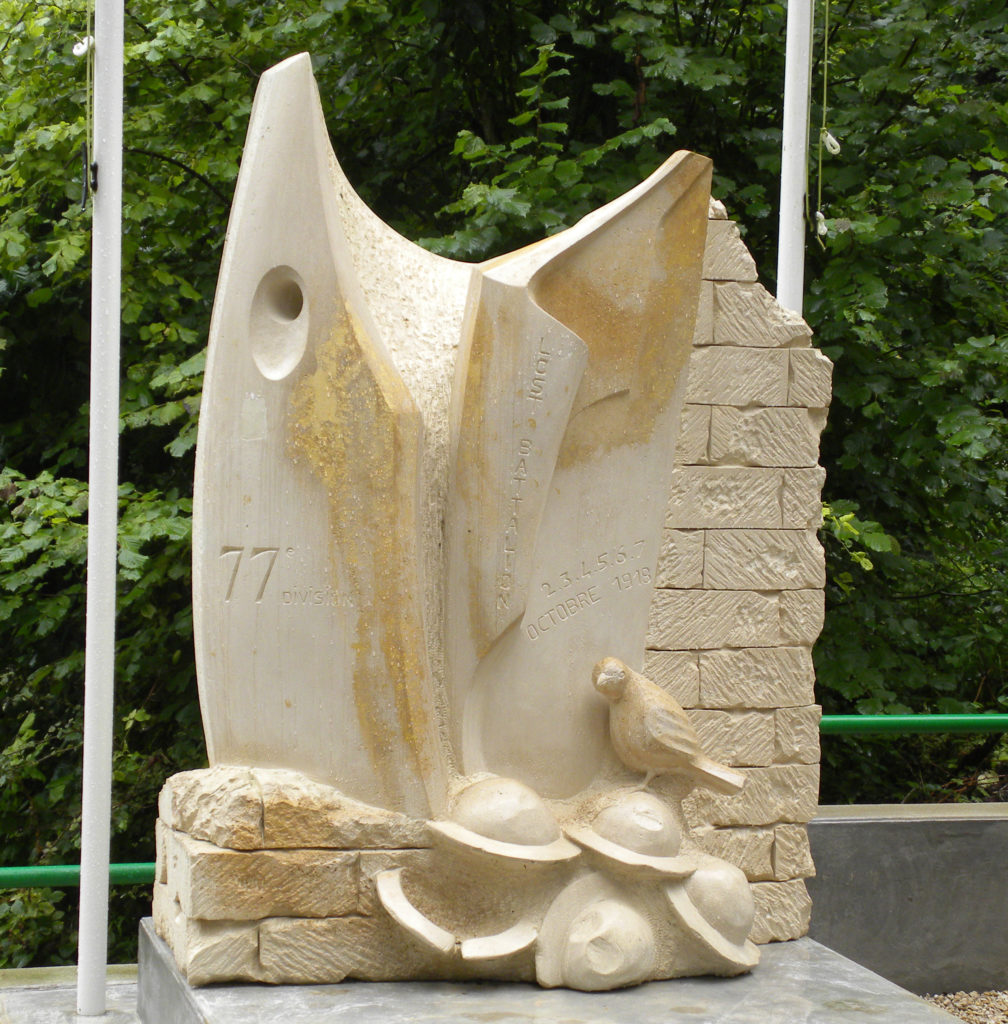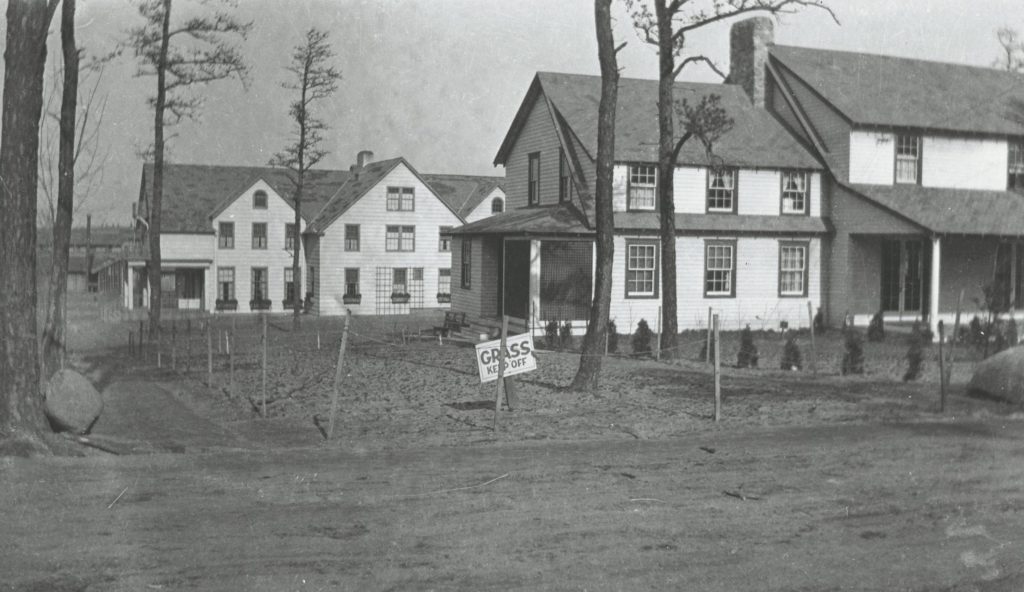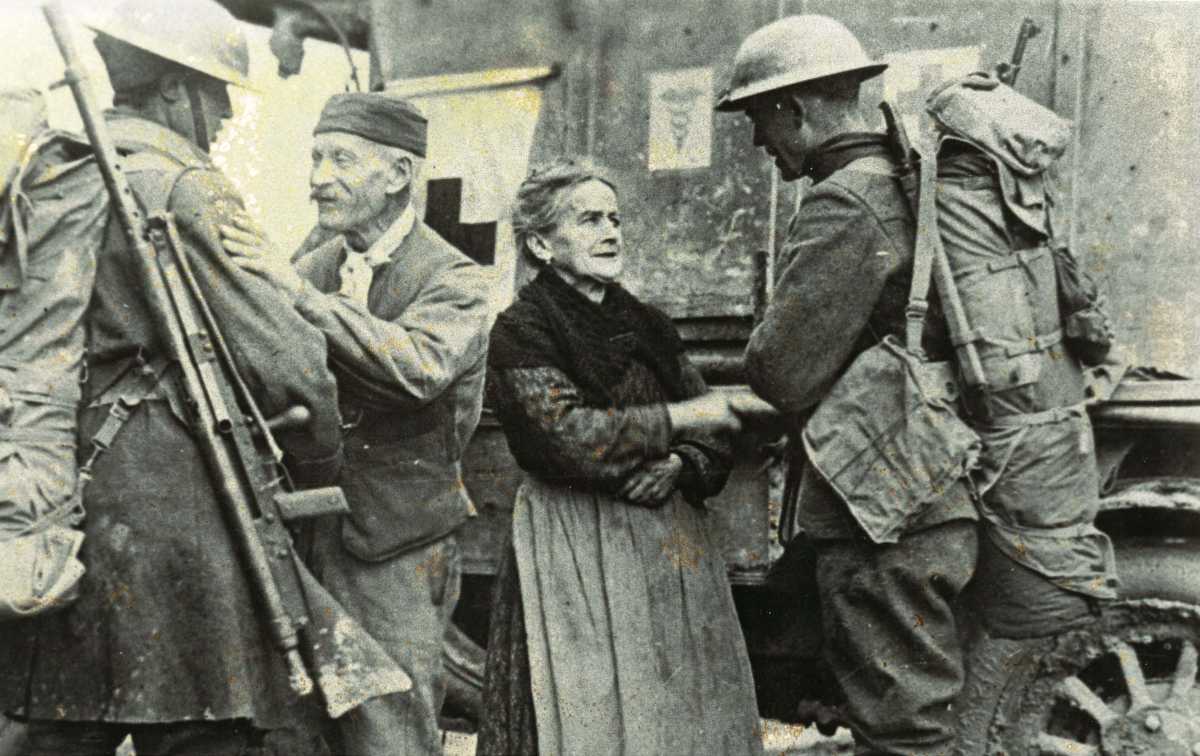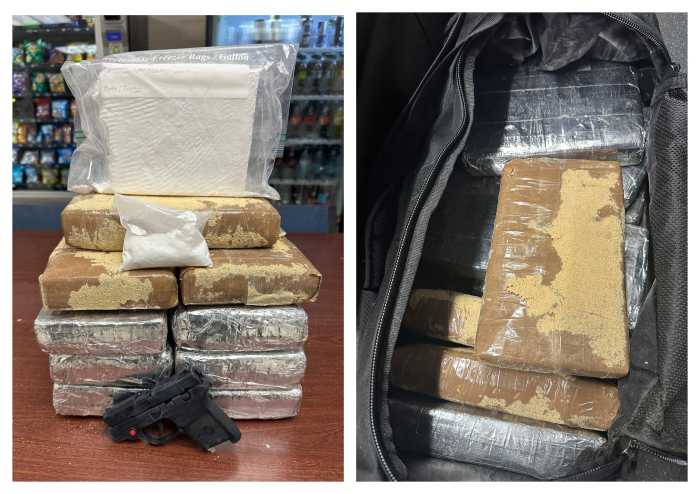On Sept. 26, 1918, the 77th Division — which included many Ridgewood and Glendale soldiers — participated in the Battle of Argonne Forest. They were assigned a front of 7 ½ kilometers, and in 19 days, they managed to move 22 kilometers against five German divisions.
One of their units was the famous “Lost Battalion,” which is where Lost Battalion Hall in Rego Park got its name.
Elements from the 308th Infantry Regiment and the 306th Machine Gun Battalion, under the command of Charles Whittlesey, were ordered to push ahead in the Argonne Forest and were told if they broke through to keep going until they reached a certain position, until those units on their flanks caught up with them.
They followed orders, but the units on the flanks had a great deal of difficulty in moving ahead, so that Major Whittlesey’s battalion was isolated.
The Germans, discovering this, laid wire behind them and cut them off. They were in a deep ravine, completely surrounded. For six days and nights, the German troops poured hand grenades and shellfire down on them. Their food and ammunition ran low, and the Germans called upon them to surrender; they refused to do so.
Finally, American artillery fire poured down in front of the ravine and then skipped over it and poured down on the far side. A short time later, elements of the other brigades from the 77th Division entered the ravine and broke the trap. Of the 679 men that went in, 252 came out.
The German Air Force commanded the skies and bombed the Allied troops day and night.
As the war was winding down and the German armies were retreating, the 77th Division advanced 37 kilometers; when the war ended at 11 a.m. on Nov. 11, 1918, they found themselves on the east bank of the Meuse River, only two kilometers from the historic battlefield of Sedan. They were the American Division closest to the German border when the war ended.
They also had the distinction of being the first American National Army division assigned to the line in France, and the first to be assigned in an active sector. They suffered 9,611 casualties; when the war ended, they had 21,624 officers and men.
On May 6, 1919, the officers and men of the 77th Division, “New York’s Own,” were honored with a parade up Fifth Avenue, with Mayor John Hylan and Governor Al Smith greeting the troops.

All gave some, and some gave all
In 1918, the local newspapers were filled with lists of war casualties.
Private Tobias Ammon of 765 Seneca Ave. in Ridgewood, a member of the 77th Division, was killed in action in the Argonne Forest. He had left for Camp Upton on Sept. 30, 1917.
Clarence T. Leonard died of wounds he received in action on Sept. 15, 1918, in France. His wife, a resident of Hanson Place in Glendale, received the dreaded telegram. He was inducted at Camp Upton on Feb. 25, 1918, and left for France on April 6 of that year.
Corporal Bernard Brandt, son of Rebecca and Henry Brandt of 2527 Woodbine St. in Ridgewood, was convalescing at a French hospital in October 1918 after being badly burned over most of his body with mustard gas.
That August, he was guiding a squad of men from a shellhole and had to remove his mask. Upon returning to headquarters, they had to cross a creek that was apparently badly contaminated with the poisonous gas. He was the only member of the squad to survive the trip.
Private Joseph Kuehn Jr., of 349 Grove St. in Ridgewood, was killed in action on Sept. 29, 1918. He was inducted into the Army in May 1918 and assigned to Camp Upton; after a month, he had been sent to Camp Meade for further training, then shipped overseas after a week.

Sergeant William Wundersee’s father had a butcher shop in Ridgewood, and after his father died, he went to work as a clerk in Jahrsdorfer’s butcher shop on Woodward Avenue.
Wundersee died in the Argonne Woods on Oct. 18, 1918. He had left for Camp Upton on Sept. 30, 1917, and because of his background was assigned as a mess cook. He was then sent to Camp Gordon in Georgia for six weeks of training before being sent back to Camp Upton, then assigned to the front in France in April 1918.
One of the best local accounts of the war front came from Private Edward Kaiser, assigned to Company K of the 106th Regiment. He wrote a letter to his brother, George, from France, and the letter was published in the Nov. 8, 1918, issue of the Ridgewood Times.
Private Kaiser mentioned that he had some close shaves, one of which occurring the first time he went over the top of the trench. He and another fellow were in a shellhole when a shell landed about three feet away from them; it kicked up the dirt, but neither of them were injured.
For two days and nights, his post was a machine gun position in a shellhole in front of their lines.
Everything was fine until they were relieved and had to make their way back to the lines. At that time, the Germans opened up an artillery barrage that lasted an hour and a half.
“We got out okay although the shells were falling around us,” Private Kaiser wrote. “We then went into the reserve trenches for three days, and I think it was worse than the front lines. When you are in reserve, you have to take rations to the front lines every night, and it is a rather dangerous job. We took about a thousand prisoners, mostly very young or very old. They gave us trouble with their machine gun nests. We found some of them chained to their guns.”
Some local troops received many honors for their service.
First Sergeant Herman M. Sell, of 171 Decatur St. in Ridgewood, received the Distinguished Service Cross for bravery. He was in Company A of the 306th Infantry Regiment of the 77th Division on Sept. 6, 1918, at LeCendriere Woods. Six runners had attempted to carry a message to the battalion commander and none had gotten through.
Sergeant Sell was assigned to the task and was able to get through and return with valuable information.
Sell was drafted at Camp Upton on Sept. 30, 1917, and left for France the following April. Prior to his World War I service, he previously served eight years in the U.S. Navy.
In December 1918, Corporal Christopher Spor returned home from France on board the Leviathan. He lived at 472 Wyckoff Ave. in Ridgewood and had been a member of the 71st Regiment before being transferred to the Fighting 69th Regiment.
Spor was a regular Army man and saw action along the Mexican border when the U.S. Army was attempting to capture Pancho Villa.
During World War I, Spor saw action at the Battle of the Marne, Champagne, Chateau-Thierry, St. Mihel and Argonne. He was wounded at Argonne and had to be carried nine miles back to a base hospital. He wound up being blinded four days from exposure to mustard gas.
At the Battle of the Marne, he received the Legion of Honor Medal for bayonetting and shooting nine enemy troops.
From the Feb. 14, 1985, issue of the Ridgewood Times
* * *
Share your history with us by emailing editorial@ridgewoodtimes.com (subject: Our Neighborhood: The Way it Was) or write to The Old Timer, ℅ Ridgewood Times, 38-15 Bell Blvd., Bayside, NY 11361. Any mailed pictures will be carefully returned to you upon request.

































